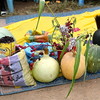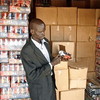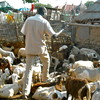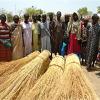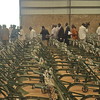‘Art is a common language which brings people together’
Q: Why did you study in Khartoum? How would you describe your experience there?
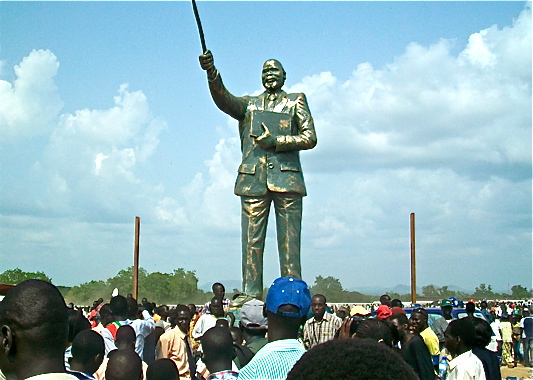 The Dr. John Garang statue in Juba.
The Dr. John Garang statue in Juba.
A: After finishing my Sudan School Certificate, I never planned to go to the North. But wartime conditions forced me to go to university in Khartoum. Higher education institutions in the South shut down during the war and there was nowhere to study fine art except the University of Arts and Technology in Khartoum.
I was the only Southerner in the faculty. I was among Northerners and students from Darfur. Relating with those students was not hard because art itself is a common language which brings people together.
Q: What your profession so important?
A: Art helps humans pin down their identity. It is part of my life and always has been -- it builds up my moral and spiritual self. When I do my work, it gives me a strong vision.
In South Sudan, every sector is in need of fine art. For instance, industries will have departments of design and creativity and this is all about artistic work. Textile Industries will have design section to serve and survive. Signposts, magazines, newspapers and television all involve graphic design, which is part of fine art. We really need to have our own textile industry to make clothing etc like what we see in countries like in Kenya, Uganda, South Africa, Tanzania and other countries.
Q: What do you know about Dr. John Garang?
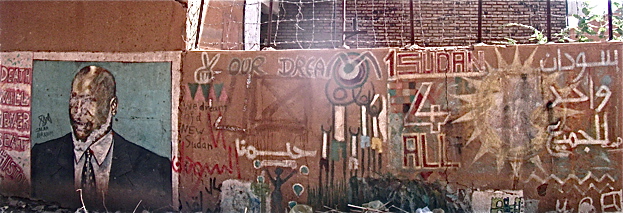 The image of South Sudan’s late leader, Dr. John Garang de Mabior, and his vision of a united ‘New Sudan’ still adorn Khartoum’s streets, October 13.
The image of South Sudan’s late leader, Dr. John Garang de Mabior, and his vision of a united ‘New Sudan’ still adorn Khartoum’s streets, October 13.
A: Late Dr. John Garang is an icon. As a child, I heard a lot about him; through media, from elders and through history. His vision was planted in every man’s heart and soul. His charisma made him loved by Southerners and people from all over the world. I remember when I was in Khartoum; the Northerners would dehumanise him by portraying his image as an elephant or a monkey. It is so sad that we lost him. Even if he is not with us, his vision and mission are still alive.
Q: How long did it take you to complete the portrait?
A: The whole process took two months and there were only three of us. Building the foundation took over a month. We worked quickly as the celebration was approaching. We made it using concrete, cement gypsum and iron. The foundation is two meters deep, and its height is about five meters. I did the design together with my colleague called Anthony Gordon who is also very experienced.
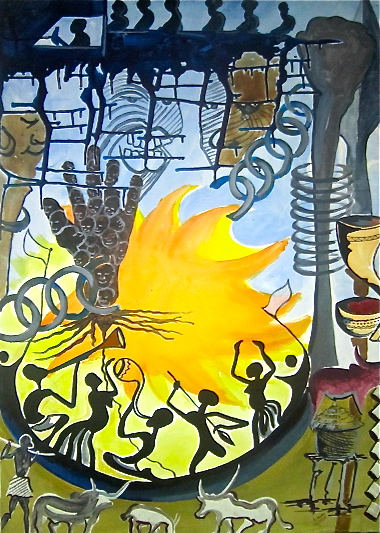 A relief art-work showcasing different traditional dances of South Sudan by David Morbe.
A relief art-work showcasing different traditional dances of South Sudan by David Morbe.
Q: How do you define your artistic work? What are you most proud of?
A: I don’t want to describe or evaluate my artistic work -- I leave that for people. I do my best, expressing myself by translating feelings into visual art. The end product can serve specific purposes such as HIV/AIDS awareness, culture showcases, portraits, cloth and logos designs and more.
There are some pieces that I am proud of. One was a portrait of women which was presented by Ministry of General Education to Former British Prime Minister, Gordon Brown, when he visited Juba. Another is a canvas painting representing freedom of South Sudan. Thirdly, a relief art-work showcasing different traditional dances of South Sudan which was also given to Gordon Brown. Overall, the work I like most and am very proud of is the sculpture of Dr. John Garang. Many people in South Sudan and internationally love and highly appreciate the work and that the statue was not made by a Kenyan, Ugandan or Chinese. But it was made by local hands.
Q: How is South Sudan’s visual arts scene?
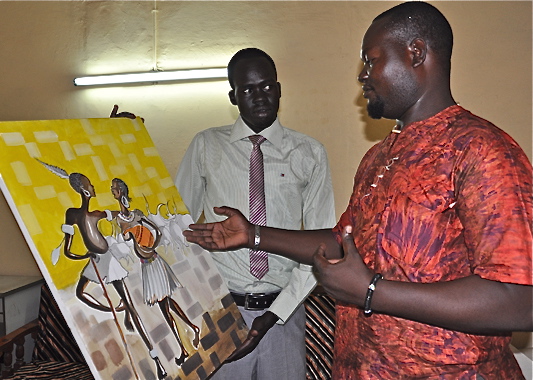 David Morbe explains one of his paintings to the author.
David Morbe explains one of his paintings to the author.
A: There is plenty of visual art in the country. However, many people don’t value it. People who enjoy visual arts here are the foreigners. We need to open schools, discover talent, encourage and motivate our children to develop and create.
There are both elderly and young artists. They include Francis Gordon, Stan Tombe, James Deng, Patrick, Santo Makoi, Chol Anei.
Q: What challenges do you face as an artists?
A: Our first challenge is a lack of modern materials. There are no studios nor galleries for exhibition. Our lack of a market is also a problem: Art professionals can’t earn a living through their art.

